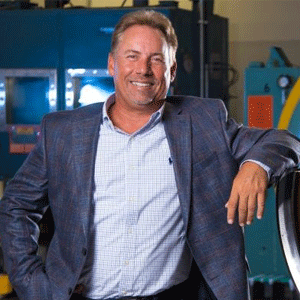- 150 W. University Blvd.
- Melbourne, FL 32901
- (321) 674-7190
- Campus Map
David Nesbitt
Bio
David Nesbitt '87 graduated from Florida Tech with a BS in Ocean Engineering. While at Florida Tech, Nesbitt rowed on the crew team culminating with a silver medal finish at the Dad Vails in 1986. He served on the Campus Activity Board and was a staff photographer for both the Crimson and Ad Astra. Nesbitt led his senior Marine Field Projects team to the International Human Powered Speed Championships in Vancouver, BC. The event was featured on the Discovery Channel and at the 1986 World Fair ultimately gaining international exposure for Florida Tech. Through his Ocean Engineering curriculum, Nesbitt was introduced to Composite Materials. He developed a strong interest in these modern materials which later became the focus of his career and entrepreneurial endeavors.
Following his graduation in 1987, he worked with several composite materials-related companies. Starting at Lindenberg Yachts (Cocoa, FL) and then with Consulier Industries (Riviera Beach, FL). While in Riviera Beach, Nesbitt was the Lead Design Engineer of an innovative sportscar called the Consulier GTP. Weighing in at less than half the weight of conventional passenger vehicles, the composite materials design attracted interest from automakers around the world. The car was the first US DOT-certified all-composite passenger vehicle and from a technology standpoint, was ahead of its time offering significant gains in performance, efficiency, and crashworthiness.
In the early ‘90s, Nesbitt moved away from automotive and secured a position within aerospace. He managed the production of acoustically treated aircraft engine cowlings for DC-8 and B707 aircraft. These carbon fiber composite cowlings called “hush kits” were used to reduce engine noise enabling obsolete aircraft to meet stringent noise requirements being introduced at that time. It was Nesbitt’s introduction to flight-critical composite structures. While at this aerospace manufacturing Company, Nesbitt also obtained other key manufacturing experience enabling him to develop and commercialize new manufacturing methods for flight-critical aircraft components.
In 1993, Nesbitt founded Matrix Composites Inc. He and his two partners Mr. Ken Swarner (ASU Industrial Engineering ‘81) and Mr. Doug Dawson (FIT OE ’87) started the Company with its original factory in Palm Bay, Florida. The Company differentiated itself by focusing on precision molding of complex flight-critical structures. The self-financed business grew organically from just several employees to more than 120 technicians, production personnel, administrators, and engineers before its acquisition by ITT Corporation (White Plains, NY) in 2019.
Matrix was able to secure long-term manufacturing agreements on many notable aerospace and defense programs. In 2005, the Matrix became a key supplier of the F22 Raptor (5th generation fighter.) Subsequently, Matrix supported F35 production by licensing its trademarked HiRPM® Process to Lockheed Aeronautics (Palmdale, CA).
The Company currently produces flight-critical vanes, stators, and airflow surfaces for GE’s LEAP-1B and 9X engines as well as all of Pratt & Whitney’s Geared Turbo Fan(GTF) engines. Matrix hardware can be found on all Airbus NEO aircraft as well as Boeing 747, 787, and 737 Max commercial jets.
Nesbitt retired in July 2022 and resides in Melbourne Beach, Florida. He has been a long-time supporter of Florida Tech hiring many graduates, employing interns, and donating time and materials to Student Senior Design projects over the years. He now serves as an advisor and consultant to the aerospace composite industry. He is an active member of the Melbourne Yacht Club and is on the Aerospace Engineering Advisory Board at Florida Tech.
Education
Florida Tech - B.S. in Ocean Engineering '87


